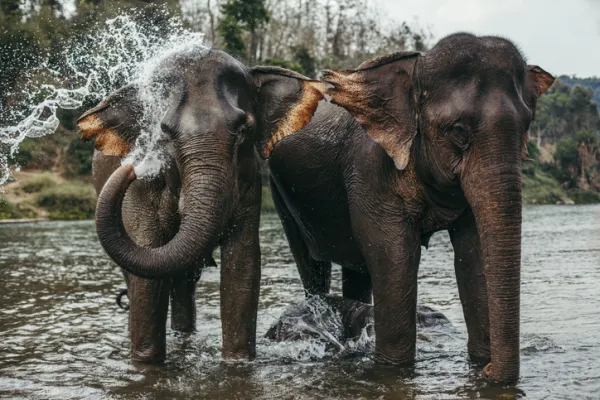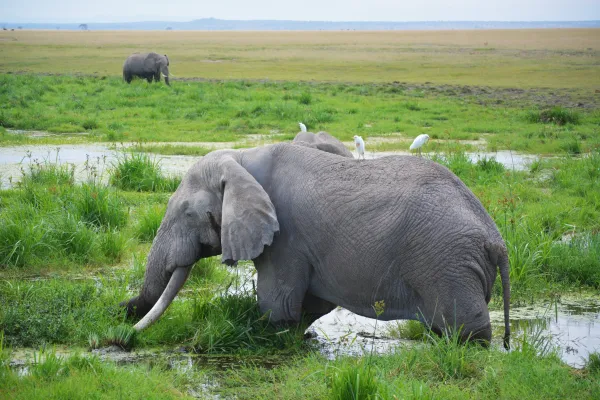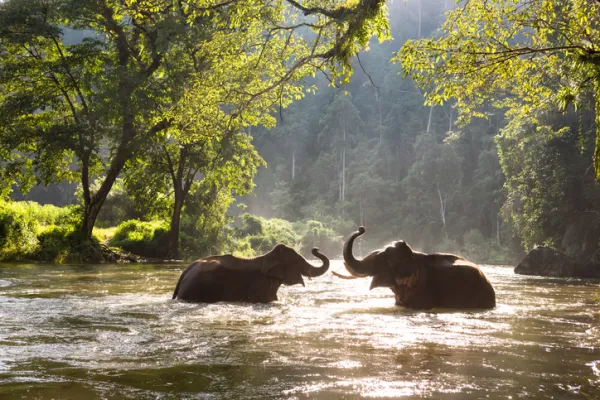Elephants are the largest living land mammals, naturally found in Africa and Asia. Taxonomically, they fall into two lineages: African Elephants-Are-Endangered.html">elephants (Loxodonta) and Asian Elephants-Are-Endangered.html">elephants (Elephas). Multiple human-driven pressures now place all extant species and regional populations under significant extinction risk.

(Family Elephantidae · Order Proboscidea)
Core drivers of elephant decline
African elephants: species & distribution
Asian elephants: subspecies & distribution
What we can do: proven conservation actions
Quick reference (key points)
FAQs
Despite the 1989 CITES ban on international ivory trade, black-market demand persists, incentivizing cross-border poaching and smuggling.
Beyond ivory, demand for bone, skin, and other derivatives also fuels killing.
Selective removal of breeding females and large-tusked males destabilizes herd structure and long-term reproduction.
Expansion of settlements, agriculture, and infrastructure (roads, canals, railways, fencing) shrinks home ranges and blocks migration corridors.
Deforestation and degradation reduce food and cover; pollution and climate variability further stress water and forage availability.
As ranges contract, elephants enter farms and villages seeking food and water, causing crop damage, injury, and property loss.
Retaliatory killing, snares, and poisoning escalate mortality.

African savanna elephant — Loxodonta africana: larger-bodied; historically widespread across eastern and southern African savannas and woodlands.
African forest elephant — Loxodonta cyclotis: smaller, with straighter, thinner tusks; native to Central–West African rainforests.
Genetic, ecological, and morphological evidence supports two distinct species, with deep evolutionary divergence.
Key threats: poaching, habitat fragmentation, illegal trade networks, and HEC. Monitoring tools such as ETIS (Elephant Trade Information System) and MIKE (Monitoring the Illegal Killing of Elephants) help identify hotspots and guide enforcement.
Elephas maximus is traditionally recognized as three main subspecies, with an additional debated form:
Sri Lankan elephant — E. m. maximus: largest, darker overall; endemic to Sri Lanka.
Indian (mainland Asian) elephant — E. m. indicus: India, Nepal, Bhutan, Bangladesh, and parts of mainland Southeast Asia.
Sumatran elephant — E. m. sumatranus: paler skin, restricted to Sumatra.
Bornean elephant (“pygmy” elephant): origin and taxonomic rank remain under discussion.
Shared threats include forest loss, blocked corridors, HEC, and welfare issues linked to tourism/working elephants (capture, overwork, inadequate care).

Community co-management & training: Practical workshops for farmers and rangers on safe, non-lethal deterrents (beehive fences, chili ropes, lights/alarms) and best practices for coexistence.
Early-warning & field protection: Thermal/geo-fencing alerts, SMS warnings, crop-storage hardening, night patrols.
Land-use planning: Secure/restore corridors at landscape scale; apply wildlife-friendly design to roads/railways (underpasses, overpasses, guiding fences, speed limits).
Equipment & training for ranger teams; intelligence-led patrols, evidence collection.
Routine surveys of abundance and distribution to inform national action plans.
Illegal-trade suppression: Use ETIS and allied systems to target routes and high-risk ports; strengthen customs and judicial cooperation.
Protected-area networks: expand/upgrade core areas, corridors, and buffers.
Cross-border models: e.g., the Kavango–Zambezi (KAZA) Transfrontier Conservation Area provides contiguous habitat for ~250,000 elephants.
Ecological restoration: Reforest degraded sites, manage invasive plants, safeguard dry-season water points.
Prioritization: Use occupancy modeling and threat mapping to allocate resources where they matter most.
Behavior & genetics: Track migration routes, social structure, and genetic diversity to avoid inbreeding and to design effective corridors.
Adaptive management: Baselines → monitoring → feedback to improve outcomes.
Say no to ivory and look for verified alternatives.
Support credible NGOs/projects (donations or volunteering).
Choose responsible tourism: avoid riding and performance venues; opt for no-contact, observation-based experiences.
Share accurate information and discourage illegal trade in your networks.
Two lineages: African (savanna & forest) vs. Asian (Sri Lankan, Indian, Sumatran; Bornean debated).
Three big threats: poaching/illegal trade, habitat loss & fragmentation, HEC.
High-leverage actions: Corridors & planning, law enforcement, community co-management & alternative livelihoods, transboundary cooperation, consumer refusal of ivory.
Monitoring tools: ETIS (trade intel) and MIKE (illegal killing trends).

Why does poaching persist if ivory trade is banned?
Profits remain high in some markets, while enforcement and prosecutions can lag. Cross-border smuggling networks exploit weak points along the trade chain.
Can human–elephant conflict be eliminated?
Total elimination is unlikely, but early-warning systems, non-lethal deterrents, crop choices, insurance/compensation, and community engagement can significantly reduce frequency and damage.
Can tourism help conservation?
Yes—when it follows animal-welfare and low-disturbance principles. Well-managed ecotourism creates local incentives to protect elephants; exploitative riding/shows do the opposite.
How can I help personally?
Refuse ivory, support reputable NGOs, choose no-contact elephant experiences, and share evidence-based information to shift social norms.
animal tags: elephants
We created this article in conjunction with AI technology, then made sure it was fact-checked and edited by a Animals Top editor.